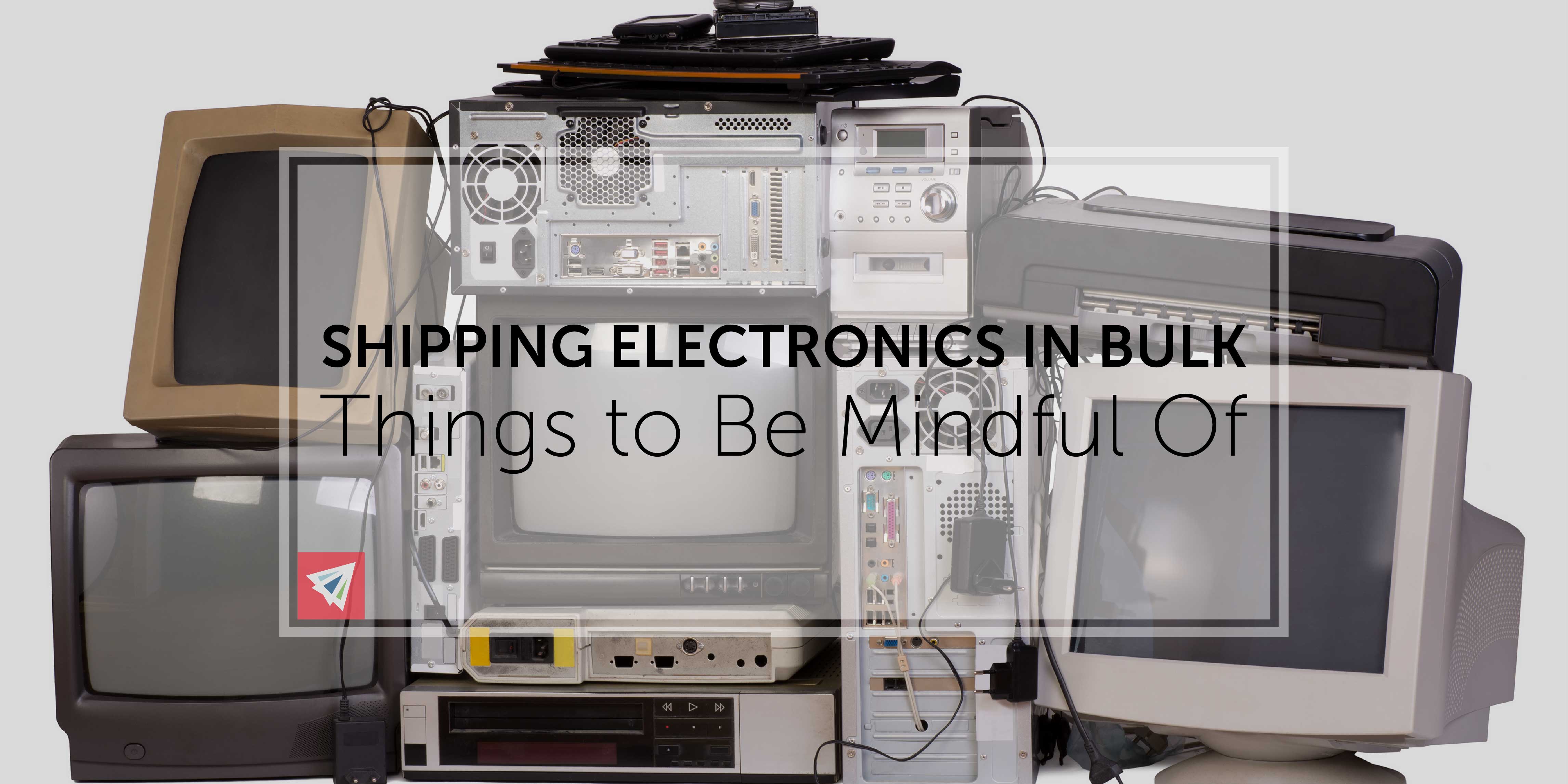As technology has progressed, there has been a great influx of traffic in the e-commerce world. Giants like Amazon.com have lead the way in this trend causing many other major retailers to follow in their footsteps.
However, this trend has not remained as a large-company activity – small businesses across the globe have access to all necessary tools for building successful online e-commerce websites. Many of the goods being sold on the market these days are electronics. Portable chargers, phones, cords, mp3 players, kitchen gadgets, computers, and so many others are being imported and exported in large quantities to and from the U.S.
Here are a few tips for shipping electronics in bulk:
Shipping Electronics in Bulk
Generally speaking, weight isn’t a huge issue here. You will most likely max out a container’s internal dimensions with your shipment of electronics before you even come close to maxing out the weight. Many shippers see this potential and assume that shipping electronics in bulk will be relatively easy, but there are a few regulations that can make the process complicated.
Lithium Batteries
These days, many electronics contain lithium batteries – laptops, computers, and cell phones are a few of these commodities. While it may be easy to fill a container full of cell phones or laptops while staying under weight restrictions, U.S. Customs has strict regulations regarding the types and quantity of batteries which are allowed to be shipped.
Not that it needs an explanation, but the fundamental concern here is over the safety. Batteries, if shorted or leaking can cause overheating, fires, hazardous waste issues, and ruin adjacent goods. This puts both people and other shippers’ cargo at risk.
The allotted amount of lithium batteries that can be shipped on a container depends on the mode of transport and the type of vessel. For sake of space, we will cover air freight since this is the most utilized form of transport for electronic devices.
The amount of allowed lithium batteries that can be shipped on a plane depends on if it is a passenger or cargo aircraft. Lithium ion batteries by themselves are strictly forbidden on both types of air craft. However, when contained in a device (phone, laptop, charger, etc.), 5kg (11lbs) may be shipped per container on a passenger aircraft. In a cargo-only aircraft, you can ship upwards of 35kg of lithium metal or ion batteries so long as they are contained in a device.
Tariff Rates
A tariff rate is a fancy term for a taxation placed on imported goods. They help to control domestic vs. foreign production and purchasing, as well as raise money for the government to pay and staff U.S. ports and Customs inspection facilities.
Most of the time the tariff rates associated with electronics aren’t too expensive. However, depending on a few key factors such as: the country of origin, the type of commodity, and materials used, you import may get pretty pricey.
Most of the time, you won’t run into issues with tariff rates when importing electronics, but a lot of it depends on the state-in-production of the goods when they enter the U.S. For example, if you are importing components and materials which will be used to build electronic devices as opposed to importing the devise themselves, you will be subject to different tariff rates. Steel, gold, and gold wiring all have unique tariff rates that can get quite expensive.
Conclusion
Shipping electronics in bulk is largely similar to shipping anything else – they’re not hazardous or dangerous materials (usually), so U.S. Customs doesn’t have a ton of regulations for them. Furthermore, the X-Ray technology used to inspect containers does not affect electronic or magnetic devices.
The main concern of importing electronics has to do with batteries. Batteries, such as lithium metal and ion batteries, have strict limits put in place regarding how many can be imported. On passenger aircraft, only 5kg may be shipped in a single container, while cargo aircraft permit up to 35kg of lithium metal or ion batteries. Lastly, you need to be mindful of the tariff rate expenses you will infer from importing goods to the U.S. Depending on the state of the goods when they are imported (finished vs. materials), you may end up paying hefty import taxes.
If you are curious as to whether or not you are losing money on your imports, or if there is simply a way to achieve the same result cheaper, give us a call and we are happy to help. Our team is very experienced with shipping electronics and has tons of recommendations on how you can more effectively manage your shipping processes.
